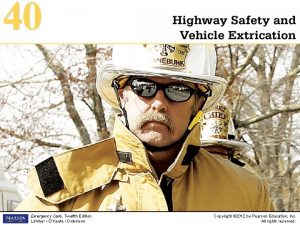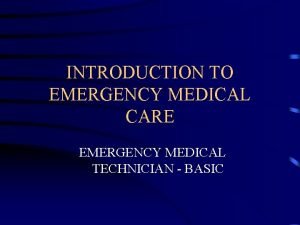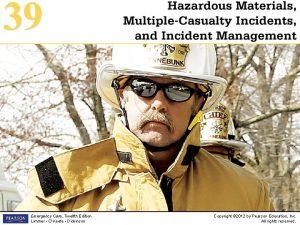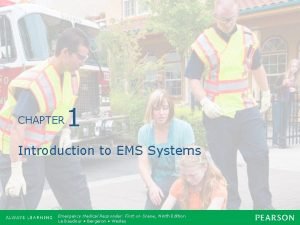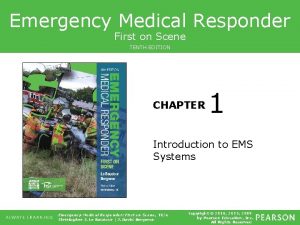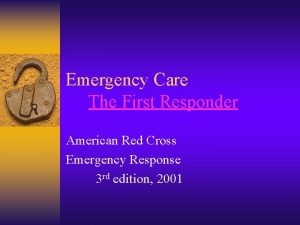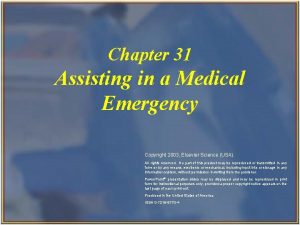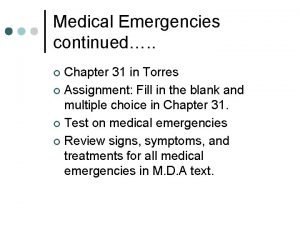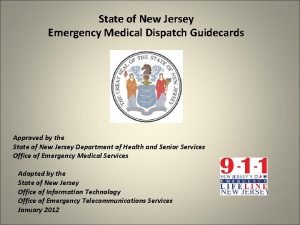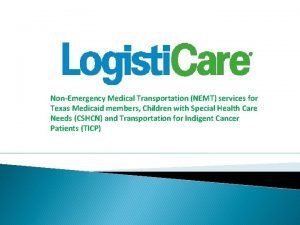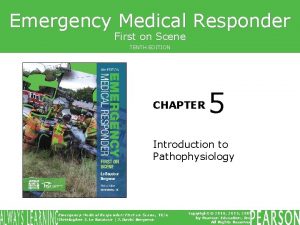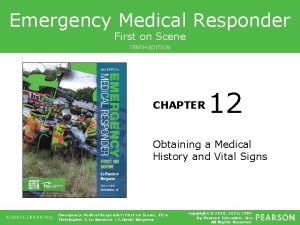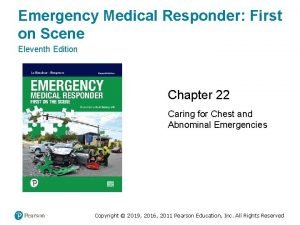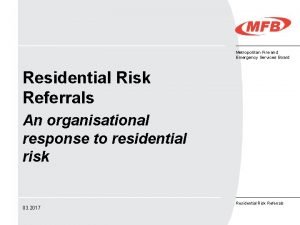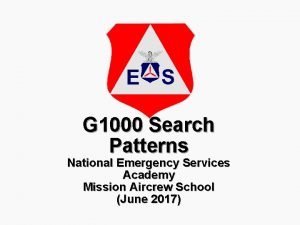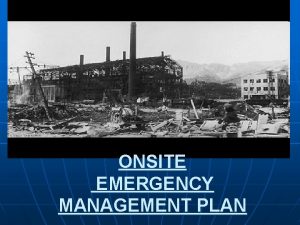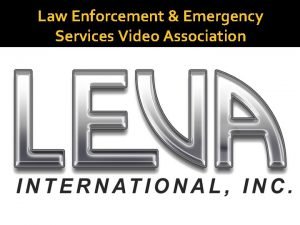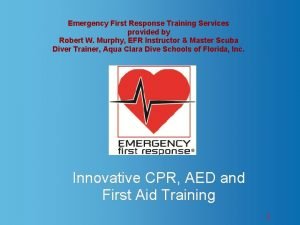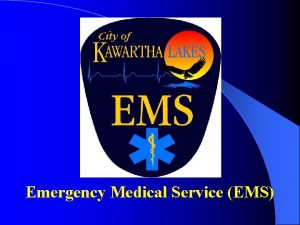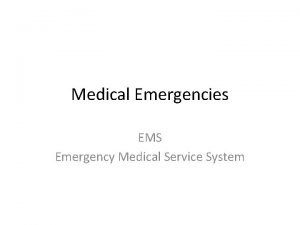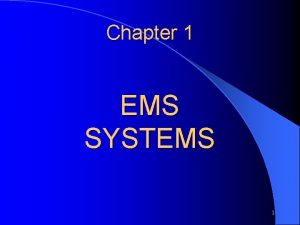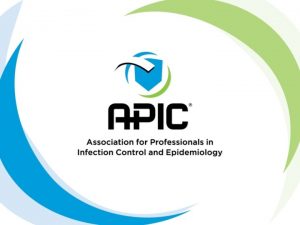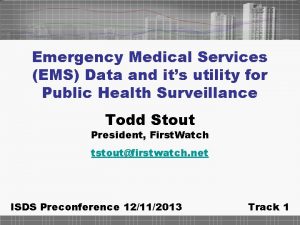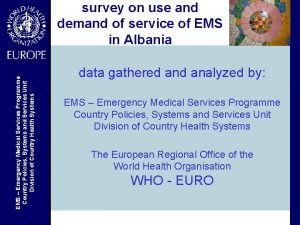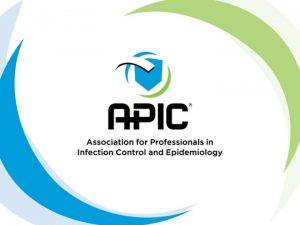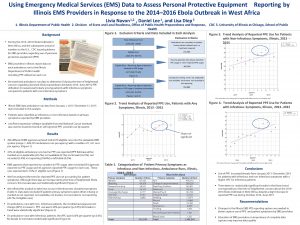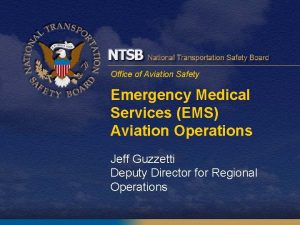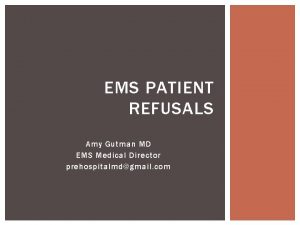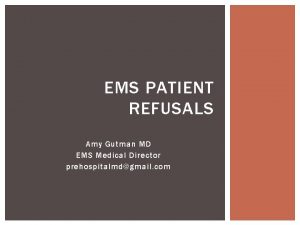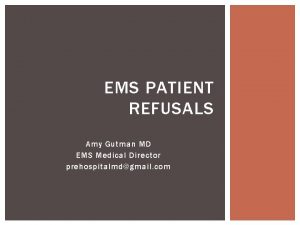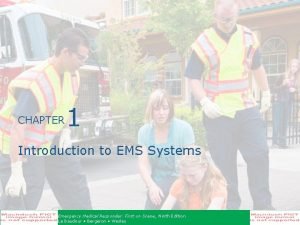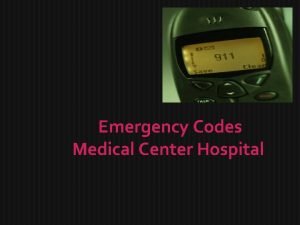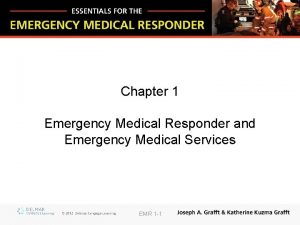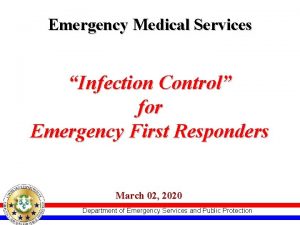Introduction to Emergency Medical Services EMS In the

























- Slides: 25

Introduction to Emergency Medical Services (EMS)

In the state of Massachusetts there are four levels of emergency care providers: • • First Responder Emergency Medical Technician (EMT) – Basic EMT – Intermediate EMT - Paramedic

First Responder • CPR trained at the health care professional level • Required minimum training for all police and firefighters in Massachusetts • Usually the first on the scene in an emergency • Trained to treat life-threatening emergencies with a minimum amount of equipment

EMT - Basic • All of the skills of the first responder plus: – Trained in the use and operation of the ambulance – Certified to administer oxygen, glucose, epinephrine and some other medications at the on-line or off-line direction of the closest emergency department’s lead physician • Called the “medical control” physician

EMT - Intermediate • All of the skills of the EMT-Basic plus: – Capable of starting an intravenous line and infusing volume-replacing normal saline – Trained to place an endotracheal tube in a patient’s windpipe to create a secure means of ventilating the lungs

EMT - Paramedic • All of the skills of the EMT-Intermediate plus: – Administration of intravenous medications for cardiac, diabetic and other medical conditions under either off-line or on-line direction – Many other optional and advanced skills such as chest decompression and needle crichothyrotomy, etc.

Basic or Advanced? • Basic life support called BLS describes the care given by First Responders and EMTBasics • Advanced life support, called ALS, is the higher level of care performed by EMTIntermediates and Paramedics – Permitted to perform invasive procedures • Procedures that introduce foreign substances or equipment into the patient’s body

Training • The EMS provider is legally prohibited from performing skills that are beyond his or her level of training • Each group of skills requires the proper certification • The length of time required for learning the advanced skills is considerable

First Responder Training • Prerequisite: Health Care Professional level CPR – 8 hours • 24 -hour class • Three-year certification period – Certification is maintained with a refresher course • 12 hours

EMT Basic Training • Prerequisite: Health Care Professional level CPR – 8 hours • 110 -hour class plus – Five patient contacts • State certification application and fee – $150. 00 • Two-year certification period – 24 -hour refresher course – 28 hours of continuing education – $150. 00 recertification fee

EMT Intermediate Training • Prerequisite: Health Care Professional level CPR – 8 hours • 180 -hour class plus – 100 hours of clinical observations and skills • 30 i. v. starts • 10 intubations – 100 hours of field observations and skills • 10 i. v. starts • 1 intubation

EMT Intermediate Training • State certification application and fee – $150. 00 • State administered exam – Minimum passing grade: 70% • Two-year certification period – 24 -hour refresher course – 28 hours of continuing education – $150. 00 recertification fee

EMT Paramedic Training • Prerequisite: Health Care Professional level CPR & EMT-B certification • X contact hours as an EMT-B • 400 -hour class plus – 200 hours of clinical observations and skills • 60 i. v. starts • 10 intubations – 200 hours of field observations and skills • 30 i. v. starts • 1 intubation

EMT Paramedic Training • State certification application and fee – $150. 00 • State administered exam – Minimum passing grade: 70% • Two-year certification period – 24 -hour refresher course – 28 hours of continuing education – $150. 00 recertification fee

How Far Do You Want to Go? • HCP CPR – Written and practical tests • Minimum passing grade 84% • Unlimited repeat attempts are allowed • First Responder – Written and practical tests • Minimum passing grade 80% • Unlimited repeat attempts are allowed

How Far Do You Want to Go? • EMT Basic – EMT-B is no longer part of the regular curriculum – Apply to take the summer course • Classes held at Mohawk • Evenings and alternate Saturdays from June – Aug. • Free to qualified Mohawk students

Mohawk Evening Class • Do you want to become an EMT?

What is Involved? • Lectures & written tests – Called the didactic portion – Subjects are similar to the first responder curriculum but everything is covered in more depth


What is Involved? • Practical skills demonstrations




What do the participants say?

The choice is up to you • Applications are available • Ask me for more information
 Introduction to emergency medical care
Introduction to emergency medical care Tdh ems
Tdh ems Introduction to emergency medical care
Introduction to emergency medical care Introduction to emergency medical care
Introduction to emergency medical care Chapter 1 ems systems
Chapter 1 ems systems Emergency medical responder first on scene
Emergency medical responder first on scene Red cross first responder
Red cross first responder Chapter 31 assisting in a medical emergency
Chapter 31 assisting in a medical emergency Define medical emergency chapter 31
Define medical emergency chapter 31 Medical emergency student lectures
Medical emergency student lectures Emergency medical dispatch guidecards
Emergency medical dispatch guidecards Texas medicaid medical transportation program
Texas medicaid medical transportation program Cardiopulmonary
Cardiopulmonary Antecubitsl
Antecubitsl Emergency medical responder first on scene 11th edition
Emergency medical responder first on scene 11th edition Metropolitan fire and emergency services board
Metropolitan fire and emergency services board National emergency services academy
National emergency services academy Onsite emergency plan
Onsite emergency plan Law enforcement video association
Law enforcement video association Emergency response training services
Emergency response training services Hình ảnh bộ gõ cơ thể búng tay
Hình ảnh bộ gõ cơ thể búng tay Lp html
Lp html Bổ thể
Bổ thể Tỉ lệ cơ thể trẻ em
Tỉ lệ cơ thể trẻ em Chó sói
Chó sói Thang điểm glasgow
Thang điểm glasgow
